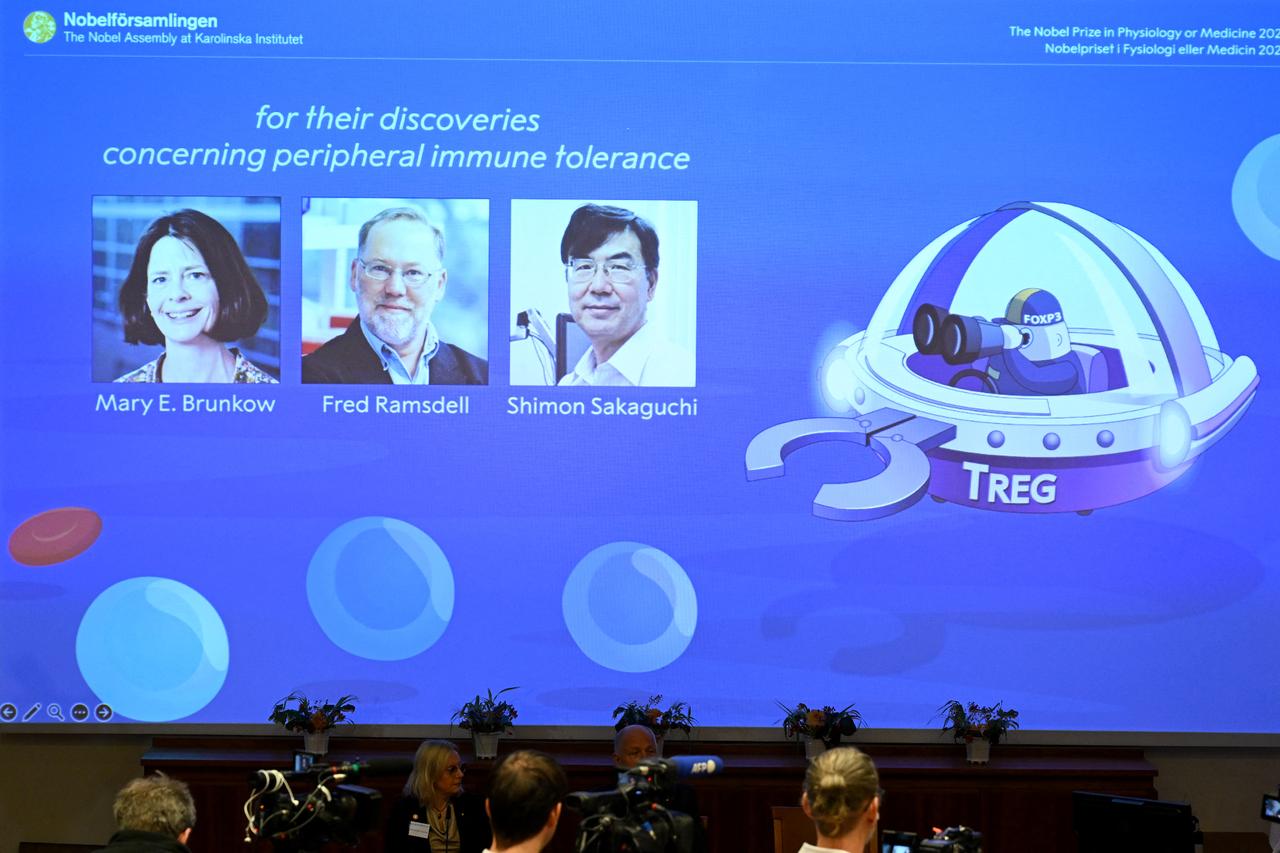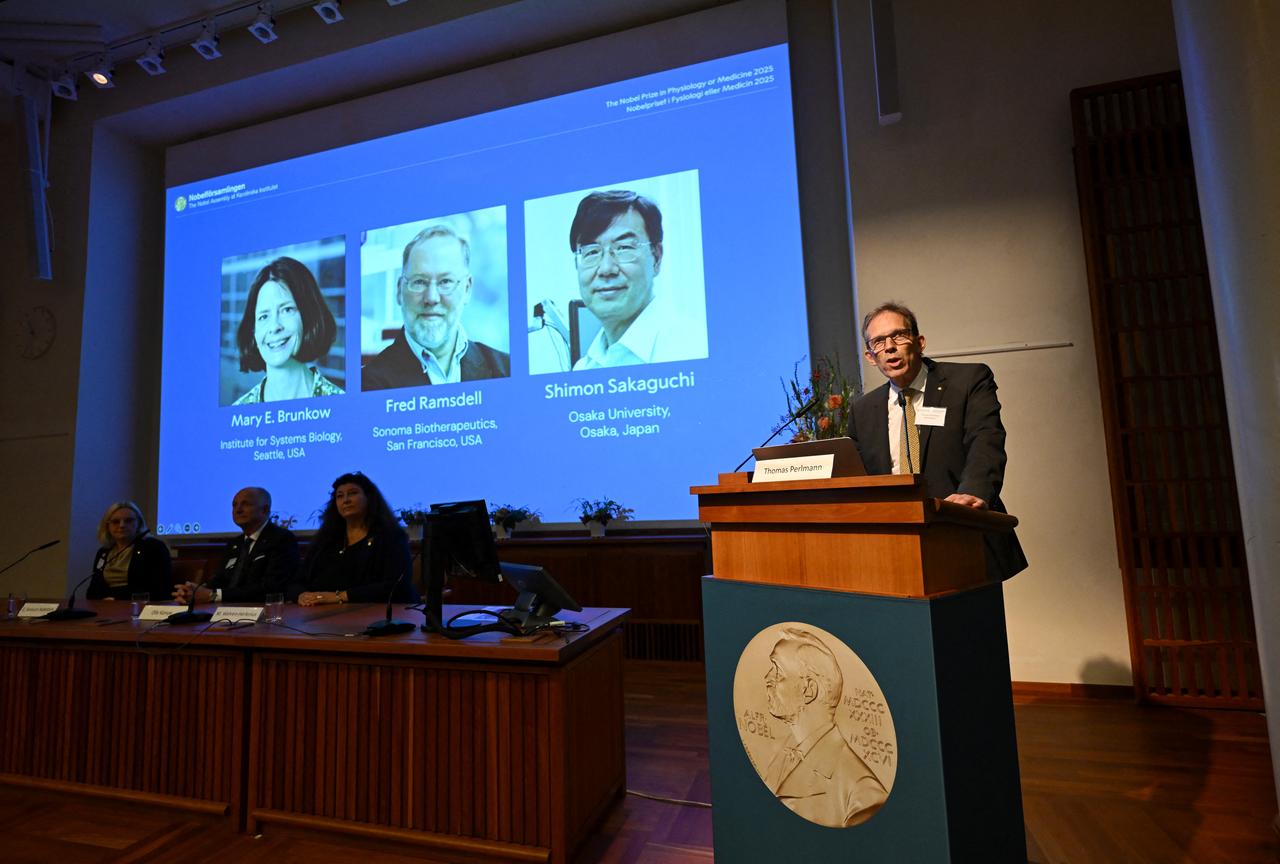
Mary E. Brunkow and Fred Ramsdell of the United States and Japan’s Shimon Sakaguchi won the 2025 Nobel Prize in Medicine on Monday for discoveries explaining how the immune system is kept in check, the Nobel jury announced.
The trio was honored “for their discoveries concerning peripheral immune tolerance,” which have been decisive for understanding how the immune system functions and why humans do not all develop serious autoimmune diseases, the committee said.
“Their discoveries have laid the foundation for a new field of research and spurred the development of new treatments, for example, for cancer and autoimmune diseases,” the jury added, noting their findings may also lead to more successful transplantations.
Sakaguchi, 74, made the first breakthrough in 1995, when he discovered a previously unknown class of immune cells that protect the body from autoimmune disease. Until then, researchers largely believed immune tolerance occurred only through the elimination of harmful immune cells in the thymus, a process known as “central tolerance.”
Brunkow, 63, and Ramsdell, 64, made the second major discovery in 2001, identifying a gene mutation—Foxp3—in mice that made them highly vulnerable to autoimmune disease.
They later showed that mutations in the human equivalent of this gene cause a severe autoimmune condition known as IPEX.
Two years later, Sakaguchi linked the findings, establishing how regulatory T-cells suppress immune overreactions that can harm the body.
The laureates will receive their awards—a diploma, a gold medal, and a $1.2 million prize—from King Carl XVI Gustaf at a ceremony in Stockholm on December 10, the anniversary of Alfred Nobel’s death in 1896.

Researchers from major U.S. institutions have long dominated the Nobel science prizes due to sustained investment in basic research and academic freedom.
But that leadership could erode following massive cuts to U.S. science programs announced by President Donald Trump.
Since January, the National Institutes of Health (NIH) has canceled 2,100 research grants worth about $9.5 billion and $2.6 billion in contracts, according to the independent database Grant Watch.
Thomas Perlmann, secretary general of the Nobel committee for medicine, told AFP it was “no coincidence that the U.S. has by far the most Nobel laureates,” but warned of “a creeping sense of uncertainty about the U.S. willingness to maintain its leading position in research.”
“The United States has been the very engine of global science,” Perlmann said.
“There would be serious consequences for research worldwide if it starts to falter. It doesn’t take many years of large cutbacks to cause irreversible harm.”
Trump, meanwhile, has made no secret of his desire to win a Nobel Prize himself—specifically the Peace Prize—but experts say his “America First” policies make that unlikely.
“It’s completely unthinkable,” said Oeivind Stenersen, a historian who has written about the Nobel institution. “Trump is in many ways the opposite of the ideals the Nobel Prize represents.”
This year’s Nobel season continues Tuesday with the announcement of the physics prize, followed by chemistry on Wednesday, literature on Thursday, the peace prize on Friday, and economics on Monday, Oct. 13.
Sudan’s Emergency Response Rooms, media watchdogs such as the Committee to Protect Journalists and Reporters Without Borders, and Yulia Navalnaya, widow of Russian opposition leader Alexei Navalny, are among the favorites for the Peace Prize.